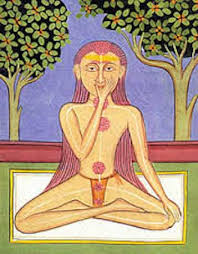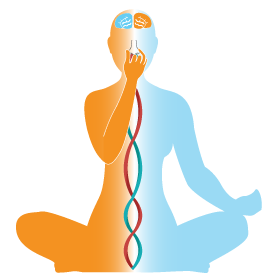 Karuna Yoga Maha Vidya Peetham, Yoga TTC program in Bangalore India, is designed to make you proficient in the knowledge of Pranayama. Pranayama is popularly known as the process involving the control of breath. Despite the fact that this translation may appear to be right in perspective of the practices included, it does not pass on the full importance of the term. The word pranayama is comprised of two parts: ‘prana’ plus ‘ayama’. Prana signifies ‘vital energy’ or ‘life force’. It is the force which exists in all things, whether animate or inanimate. Although closely related to the air we breathe, it is more subtle than air or oxygen. Therefore, pranayama should not be considered as n1ere breathing exercises aimed at introducing extra oxygen into the lungs. Pranayama utilizes breathing to impact the stream of Prana in the Nadis or energy channels of the Pranamaya Kosa or energy body.
Karuna Yoga Maha Vidya Peetham, Yoga TTC program in Bangalore India, is designed to make you proficient in the knowledge of Pranayama. Pranayama is popularly known as the process involving the control of breath. Despite the fact that this translation may appear to be right in perspective of the practices included, it does not pass on the full importance of the term. The word pranayama is comprised of two parts: ‘prana’ plus ‘ayama’. Prana signifies ‘vital energy’ or ‘life force’. It is the force which exists in all things, whether animate or inanimate. Although closely related to the air we breathe, it is more subtle than air or oxygen. Therefore, pranayama should not be considered as n1ere breathing exercises aimed at introducing extra oxygen into the lungs. Pranayama utilizes breathing to impact the stream of Prana in the Nadis or energy channels of the Pranamaya Kosa or energy body.
The word Yama signifies “control” and is utilized to signify different guidelines or codes of conduct. In any case, this is not the word, which is joined to Prana to shape Pranayama; the right word is “ayama” which has much more practicality. Ayama is characterized as “extension” or ‘development’. Consequently, the word pranayama signifies ‘augmentation or extension of the measurement of Prana. The procedures of pranayama give the strategy whereby the life constrain can be actuated and directed to go past one’s ordinary limits or confinements and achieve a higher level of vibratory vitality and awareness.
Prana and Way of Life
Our Lifestyle profoundly affects the Pranamaya Kosha and its Pranas. Physical exercises, for example, work out, work, rest, intake of food and sexual relations all influence the distribution and stream of Prana in the body. Resources of the mind, for example, feeling, thought and creative energy influence the Pranic body to a vast extent. Inconsistencies in our lifestyles along with careless diet plans and stress results in the exhaustion and discourage the Pranic stream. These outcomes in what individuals encounter as being ‘depleted of vitality’.
200-hour Hatha Yoga program conducted by Karuna Yoga Maha Vidya Peetham, teacher training center in, Bangalore, India employs various breathing exercises for the wellbeing of its participants. It allows users to fight a low energy level. Exhaustion of vitality in a specific Prana prompts to the devitalization of the organs and appendages it represents and eventually to sickness or metabolic brokenness. The strategies of pranayama nullify this procedure, empowering and adjusting the distinctive Pranas inside Pranamaya Kosha. Pranayama practices ought to be performed after Asanas in a coordinated yoga program.
Breathe, health and pranayama
The breath is the most vital process of the body. It influences the activities of each and every cell and, most importantly, is intimately linked with the performance of the brain. Human beings breathe about 15 times per minute and 21,600 times per day. Respiration is provides the source for the burning of oxygen and glucose, producing energy to power every muscular contraction, glandular secretion and mental process. Breath has a major connection to all the aspects of human experience.
Most people breathe incorrectly, using only a small part of their lung capacity. The breathing is then generally shallow, depriving the body of oxygen and Prana essential to its good health. The first five practices given in this section are preparatory techniques that introduce correct breathing habits. In addition, they help focus the awareness on the breathing process, which is otherwise normally ignored. Practitioners develop sensitivity to the respiratory process and retrain the muscles of the pulmonary cavity, enhancing their vital capacity and preparing them for pranayama.
